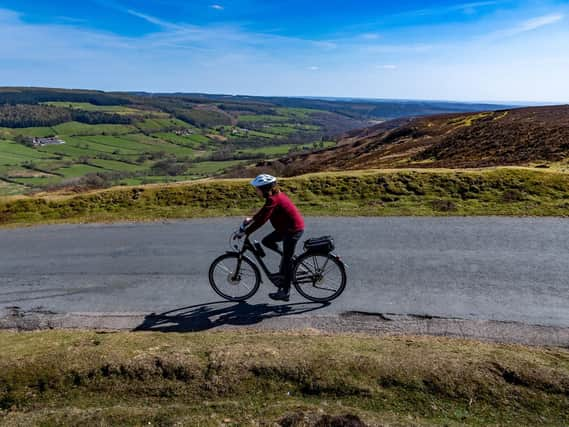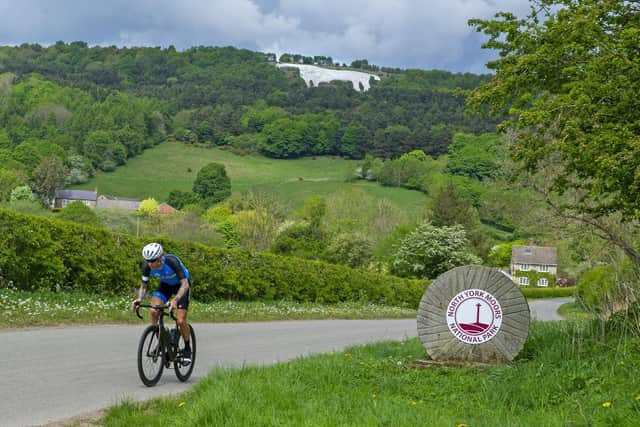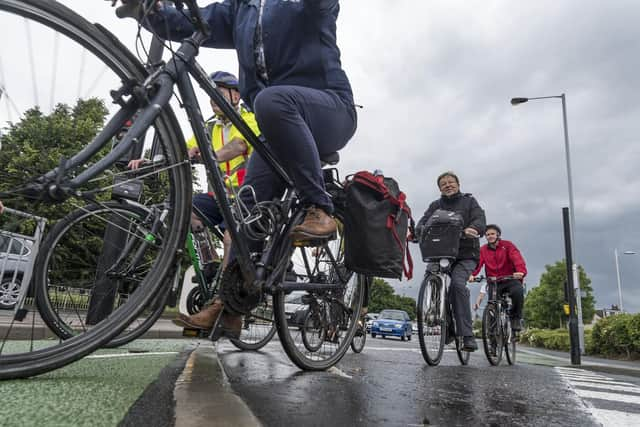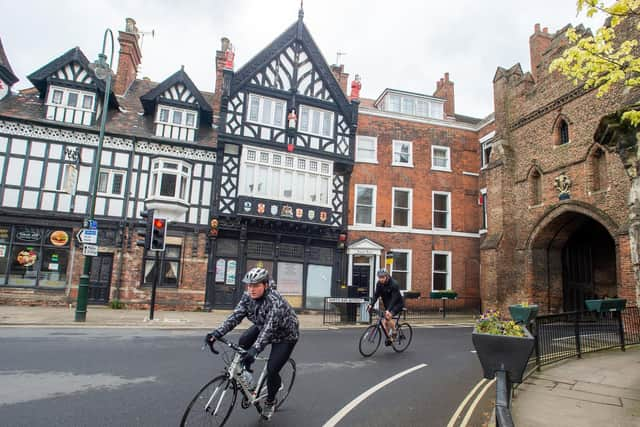Yorkshire has country's highest rate of cycling deaths and injuries outside South East, Government statistics reveal


Government data released today reveal the region had the third highest number of cyclists killed and injured by population last year, after London and the South East.
Some 13 cyclists were killed on Yorkshire's roads and highways in 2019, while more than 1,400 incidents were recorded involving cyclists who sustained serious or minor injuries.
Advertisement
Hide AdAdvertisement
Hide AdHull and York had the highest rates of cycling casualties per 100,000 people, with three cyclists killed in each district last year.


Two people were also killed in Leeds, while cyclists were also killed on roads in the East Riding, Craven, Wakefield, Barnsley and Calderdale.
Overall, there were 385 serious injuries and 1,039 minor injuries recorded across the Yorkshire & the Humber region in 2019.
Local authorities are now being urged to improve their cycling infrastructure to cut road deaths and injuries as more people use their bikes to avoid public transport during the Covid-19 pandemic.
Advertisement
Hide AdAdvertisement
Hide AdIt comes as two victims killed on the roads were named by police in Yorkshire in recent weeks.


Cyclist Jeffrey Atkinson, 76, died after a collision with a lorry in Strensall, York, on August 27, and 61-year-old Patrick Hird was killed in a hit-and-run collision near Selby last month. Inquests into both men's deaths are to open in the coming weeks.
Daisy Narayanan, Director of Urbanism at walking and cycling charity Sustrans, said: “Findings from our most recent Bike Life report highlights safety as a key barrier preventing people cycling.
"Only 28 per cent of residents from 12 UK urban areas believe cycling safety in their city to be good. Therefore, while cycling is a relatively safe activity, we need to continue to make our streets safer for people who cycle and to increase people’s perception of safety."
Advertisement
Hide AdAdvertisement
Hide AdNationally, the overall number of cycling casualties has fallen every year since 2016, although the number of serious injuries has increased by nine per cent.


Police definitions of serious injuries changed in 2016, although are generally considered any incident which has resulted in a broken bone or worse.
The average age of casualty was 36 last year, with the vast majority of victims being men.
Ms Narayanan added: “Local authorities should work to create safer, better streets and places through the implementation of protected cycle routes and low traffic neighbourhoods, whilst taking into account the local context.”
Advertisement
Hide AdAdvertisement
Hide AdThe UK Government said it is investing billions to make cycling safer.
A spokeswoman for the Department for Transport said: “We continue to work hard to make our roads as safe as possible safe for vulnerable users, and the decrease in the number of cyclist casualties from the previous year is encouraging.
“We’re investing an unprecedented £2 billion to support cycling and walking over the next five years, including for safe high-quality infrastructure, and proposing changes to The Highway Code to further protect cyclists, pedestrians and horse riders.”
Support The Yorkshire Post and become a subscriber today. Your subscription will help us to continue to bring quality news to the people of Yorkshire. In return, you'll see fewer ads on site, get free access to our app and receive exclusive members-only offers. Click here to subscribe.